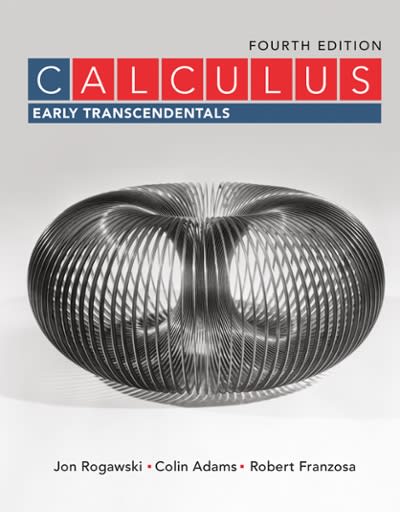You have a stock solution certified by a manufacturer to contain 150.0 ug mL- (standard deviation 0.3 ug mL-1) SO . You would like to dilute it by a factor of 100 to obtain 1.500 ug mL-1. Two possible methods of dilution are recommended below. For each method, calculate the corresponding relative standard deviation, Use your results to explain why one method is more precise than the other. Method A: Dilute 10.00 mL up to 100 mL with a transfer pipette and volume flask. Then take 10.00 mL of the dilute solution and dilute it again to 100 mL. Method B: Dilute 1.000 mL up to 100 ml with a transfer pipette and volumetric flask. Useful information: Tolerance of a 1.000-mL transfer pipette is 0.006 mL Tolerance of a 10.00-mL transfer pipette is 0.02 ml Tolerance of a 100.00-mL volumetric flask is 0.08 ml Examination 2014 The absorbance, A, of solution is given by A = -log10 (T), where T is the transmittance. (i) If the measured value of T is 0.501 with a standard deviation of 0.001, calculate A (ii) and its standard deviation. (iii) Derive an expression for the relative standard deviation of A. Basic calculus indicates that the minimum or the maximum value of a parameter (say y) at a particular value (say x) can be easily estimated by setting the derivative of the function for y (i.e. dy/dx) to zero to obtain the corresponding x value. Using this information, estimate the value of T when the relative standard deviation is at its minimum. A prosecuting attorney in a criminal case presented as principal evidence small fragments of glass found imbedded in the coast of the accused. The attorney claimed that the fragments were identical in composition to a rare Belgian stained glass window broken during the crime. The average values of triplicate analyses for five elements in the glass are shown in the table below, where the population standard deviation (o) was used to estimate the sample standard deviation (s). On the basis of these data, does the defendant have grounds for claiming reasonable doubt as to guilt? Use the 99% confidence level as a criterion for doubt. Concentration in ppm Standard deviation From Clothes s (sample SD) - o Element From Window (population SD) As 129 119 9.5 Co 0.53 0.60 0.025 La 3.92 3.52 0.20 Sb 2.75 2.71 0.25 Th 0.61 0.73 0.043 Page 4 of







